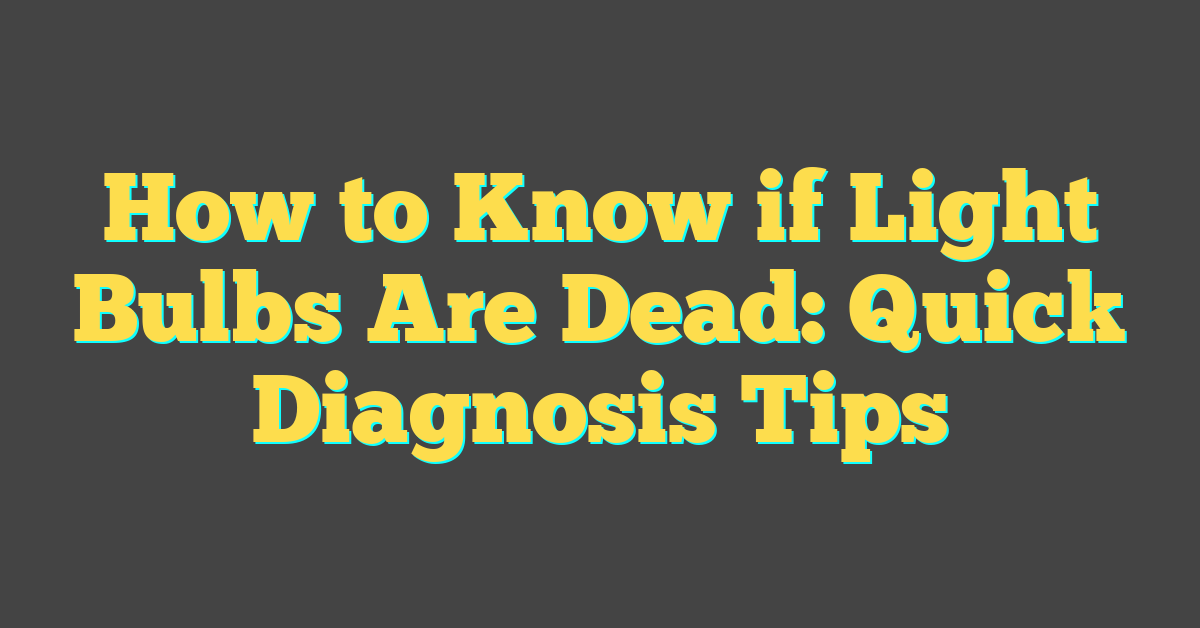Ever wondered if the flicker of a light bulb could be more than just a nuisance? You’re not alone. For some, the lights we take for granted can pose a hidden risk.

Flashing lights are known to trigger seizures in people with photosensitive epilepsy, but what about the everyday bulbs lighting up your home? It’s time to shed some light on this illuminating topic and find out if your lighting could be a trigger.
Stay tuned as we delve into the connection between light bulbs and seizures, and what you can do to minimize your risk.
What is photosensitive epilepsy?
You’ve likely heard of epilepsy, a disorder where nerve cell activity in the brain is disturbed, causing seizures. Within that spectrum, there’s a condition known as photosensitive epilepsy, which is a form of epilepsy where seizures are triggered by flashing lights or contrasting light patterns. It’s essential for your lighting DIY projects to keep safety at the forefront, especially if you or someone in your household is among the relatively small percentage of people with this sensitivity.
Understanding the Triggers
Photosensitive epilepsy is particularly interesting because of its external triggers:
- Strobe lights at parties or concerts
- Flashing screens from television or video games
- Rapid flickers from faulty fluorescent lighting
What’s fascinating and critical to know is that certain light frequencies, generally between 5 and 30 Hertz (Hz), are most likely to cause issues. So, when you’re choosing lighting options or embarking on your next home project, you might want to consider the flicker frequency of your light bulbs.
Identifying Safe Lighting Options
When looking for safer lighting solutions, it’s best to opt for bulbs with minimal flicker and a more stable light output. LED bulbs, for example, are a popular choice as they tend to have less flicker and are more energy-efficient. Here are a few features to look for to reduce the risk of seizures:
- Flicker-free label: Some LED bulbs and fixtures are specifically designed to minimize flicker.
- Dimmable options: These allow for the adjustment of light intensity which can reduce triggering contrasts.
- High-quality fixtures: Investing in well-made fixtures ensures more consistent light that’s less likely to induce seizures.
Making Informed Choices
As you delve into the world of lighting and design, being informed about the possible health implications is crucial. Knowledge about photosensitive epilepsy not only elevates your projects—it ensures they’re inclusive and considerate of those with the condition. Remember, while it’s a joy to play with different lightings to create the perfect ambiance, it’s imperative to prioritize the well-being of all who’ll enjoy the space. Stay enlightened, keep experimenting, and always shine a light on safety.
How do light bulbs work?

You’ve probably twisted a light bulb into a socket dozens of times without giving it a second thought. But have you ever paused to ponder how these everyday items illuminate your world? The workings of a light bulb are quite ingenious, yet elegantly simple.
At the heart of it all is the science of electricity and light. When you flick the switch, electricity flows through the bulb’s base to a filament housed inside the glass enclosure. Traditional incandescent bulbs use a tungsten filament which heats up to such a degree that it glows, producing light.
However, the landscape of home lighting has shifted dramatically. LEDs (light-emitting diodes) are taking center stage for their efficiency and longevity. Unlike their incandescent predecessors, LEDs function through the movement of electrons in a semiconductor material, generating light in a process called electroluminescence. This method doesn’t rely on heat to create light, so it’s much more energy-efficient and produces little to no flickering—a crucial consideration for those sensitive to light-induced seizures.
- Heat Output: Incandescent bulbs get hot, wasting energy in the form of heat, while LEDs stay cool.
- Lifespan: LEDs outshine incandescents, often lasting up to 25 times longer.
- Energy Consumption: LEDs use a fraction of the electricity that incandescent bulbs consume.
- Cost over Time: The initial cost of LEDs is higher, but they save you money in the long run thanks to their efficiency and lifespan.
Getting the right light bulb can be a simple DIY project that significantly impacts your living space. Don’t forget to consider the color temperature of the light, which can range from warm yellows to cool blues. The choice can affect the ambiance of a room and, more importantly, your health—especially if you’re sensitive to certain light qualities.
Remember to always check the packaging for the bulb’s specifications and ensure that it meets your needs—whether it’s for reading in your cozy study nook or lighting up your lively backyard gatherings.
Can flickering light bulbs cause seizures?

« Are Light Bulb Cameras Easy to Steal? Secure Your Home Smarter
Is a Light Bulb a Good or Service? The Surprising Dual Role Unveiled »
You’re probably aware of the soothing effect of gentle, warm light on your mood. However, not all lighting experiences are calm and serene. In fact, flickering light from a bulb that is not performing well can have serious health implications.
Flickering light bulbs are a potential trigger for photosensitive epilepsy. This is a type of epilepsy where seizures are prompted by visual stimuli, such as flashing or flickering lights. Around 3% of those with epilepsy are photosensitive, meaning this condition could impact their daily life significantly, especially if exposed to flickering lights.
The frequency at which a light flickers is key. Flicker sensitivity usually occurs in the range of 5 to 30 Hz, with 15 to 20 Hz being particularly dangerous. Most people aren’t sensitive to flickers above 60 Hz — a good thing, considering that’s the rate at which many LED bulbs operate.
When you’re involved in home DIY projects, you’ll want to ensure the lights you install don’t pose any risks. Here are some factors that can contribute to a light bulb’s flickering:
- Voltage fluctuations in your home’s electrical supply
- Loose connection in the light fixture
- Malfunctioning dimmer switches
- Incompatibility between the bulb and the fixture
To safeguard against flickering lights, it’s crucial to:
- Select high-quality LED bulbs with built-in drivers to regulate power
- Ensure fixtures and bulbs are compatible
- Check connections during installation
- Replace bulbs at the first sign of flickering
Remember, light-induced seizures aren’t limited to just individuals with epilepsy. Even those without a known condition can experience discomfort or other symptoms in the presence of flickering lights. With your love for home projects, you’ve got the power to create a safe, seizure-resistant environment, ensuring that your lighting choices brighten up spaces without the drawbacks of instability.
Studies on the relationship between light bulbs and seizures

You’re well-versed in the world of lighting, and your fascination with how something as simple as a light bulb can impact health is about to deepen. It’s no secret that light plays a critical role in our lives, but when it comes to seizures, its significance skyrockets.
Delving into the scientific studies, you’ll find robust research that connects light bulb flicker to seizures. Photo-sensitive epilepsy is a well-documented condition where flashing lights and fluctuating brightness levels can induce epileptic seizures. This is especially true when the flickering occurs within a certain frequency range.
Let’s break down some key findings:
- Studies conducted by the Epilepsy Foundation revealed that flickering light between 5 and 30 hertz (Hz) is particularly likely to trigger seizures in sensitive individuals.
- Another research highlighted that fluorescent bulbs, which were once notorious for their strobing effect, have been replaced mostly by LEDs. These modern bulbs can still flicker, but the risk is lower when you opt for high-quality LEDs with a flicker-free rating.
| Flicker Sensitivity Range | High-Risk Light Source | Preferred Light Source |
|---|---|---|
| 5 to 30 Hz | Fluorescent Bulbs | High-Quality LEDs |
One study conducted by Harvard Medical School went a step further and examined how the brain responds to light flicker. It suggests that even beyond seizures, flickering lights at certain frequencies may affect brain function.
Armed with understanding and your trusty toolkit, you’re empowered to make safe lighting choices for your home DIY projects. Remember to consider not only aesthetics but also the health impacts of the lights you install. Always opt for the best quality bulbs your budget allows, ensuring anything you put up enhances both the room’s ambiance and the well-being of those who spend time in it.
As you continue to illuminate your spaces, stay informed about the advances in lighting technology and health research. After all, your home is your sanctuary, and you want everyone in it to not only see well but also feel great.
How to minimize the risk of seizures from light bulbs

As someone who’s not just an expert in light bulbs but also a passionate DIY enthusiast, you know there’s nothing quite like the satisfaction of creating a safe and comfortable home environment. So, let’s ensure the lighting in your castle is doing more than just illuminating your space—it’s keeping you safe, especially if seizures are a concern.
First and foremost, invest in high-quality LED bulbs with a flicker-free rating. These are specifically designed to minimize the flickering that can be so problematic.
Check Your Bulb Type:
- LEDs: Preferred for stable light emission
- Fluorescents: Avoid due to inherent flicker
When you’re shopping, remember that a higher price tag often reflects better quality and safety features in LED bulbs. It’s worth the extra penny, particularly for peace of mind.
Installation is key. A loose bulb or a wonky connection can lead to flickering. Make mounting those bulbs your next DIY project—tighten them just right, and double-check those fixtures. It’s the little things that make a huge difference.
Monitor Voltage Stability:
- Use a voltage regulator if necessary
- Schedule an electric inspection if flickering persists
If you’re living in a place with voltage fluctuations, consider adding a voltage regulator to your tool belt of solutions. Keeping the current to your bulbs as steady as a surgeon’s hand is prime for preventing unwanted strobe effects.
Remember, lighting choices go beyond aesthetics. It’s about creating a secure environment that won’t trip the light fantastic in a way that could trigger health concerns. So let’s keep that flicker off your radar while you line your nests with lamps and fixtures that shine bright and steady—keeping you safe, one bulb at a time.
Conclusion
So you’ve got the tips to keep your lights flicker-free and seizure-safe. Remember, the right LED bulbs can make all the difference, and staying on top of your electrical health is key. With these smart choices, you’ll not only safeguard your health but also enhance the comfort of your space. Stay luminous and seizure-smart!
Frequently Asked Questions
What type of light bulbs are recommended to minimize the risk of seizures?
High-quality LED bulbs with a flicker-free rating are recommended to minimize the risk of seizures due to light sensitivity.
Should fluorescent bulbs be avoided to prevent seizures?
Yes, it’s advised to avoid fluorescent bulbs as they can flicker and potentially trigger seizures in individuals with light sensitivity.
How important is the installation of light bulbs in preventing seizures?
Proper installation and maintenance of light fixtures are crucial in preventing flickering that may lead to seizures.
What should one do if they live in a place with voltage fluctuations?
Using a voltage regulator can help stabilize the power supply and reduce the risk of light-induced seizures due to voltage fluctuations.
When is it necessary to schedule an electrical inspection?
If flickering persists even after checking fixtures and using the right bulbs, it might be time to schedule an electrical inspection to identify any underlying issues.




